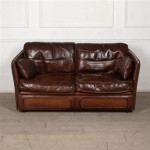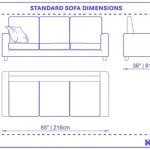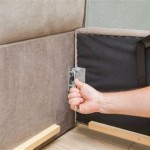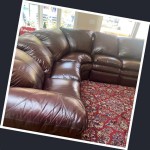DIY Sofa Reupholstering
Reupholstering a sofa can be a rewarding project for those seeking to refresh their furniture and acquire new skills. It offers the advantage of customizing the piece to one's exact preferences, from fabric choice to detailing. However, it's essential to understand the complexity and time commitment involved before undertaking this endeavor.
The process of reupholstering involves more than simply replacing the outer fabric. It requires careful deconstruction of the existing upholstery, assessment and repair of the frame and springs, and meticulous reconstruction using new materials. This in-depth approach distinguishes reupholstering from slipcovering, which simply involves covering the existing upholstery with a new fabric.
Before beginning the project, gather the necessary tools and materials. Essential tools include a staple remover, pliers, staple gun, scissors, measuring tape, seam ripper, and a utility knife. Materials will include the chosen upholstery fabric, batting, foam, webbing, and staples. The amount of fabric needed will depend on the size and style of the sofa. Accurate measurements are crucial to avoid shortages.
The first step in the reupholstering process involves careful deconstruction of the existing upholstery. This includes removing the old fabric, taking note of how it was attached, and labeling each piece for use as a pattern. Photographs taken during this stage can also be invaluable during reassembly. This methodical approach ensures that the new fabric is applied correctly.
Once the old fabric is removed, the underlying structure of the sofa is exposed. This is the opportune time to assess the condition of the frame, springs, and webbing. Broken or damaged components should be repaired or replaced. Tightening loose joints and reinforcing weak areas will ensure the longevity of the reupholstered sofa.
After the frame and springs are in good condition, new webbing can be applied if necessary. Webbing provides a supportive base for the cushions and helps distribute weight evenly. It should be stretched taut and securely attached to the frame using staples or tacks. Proper tension is essential for comfort and durability.
Next, a layer of batting is applied over the webbing. Batting adds cushioning and helps to create a smooth, even surface for the upholstery fabric. It should be cut to fit snugly and secured with staples. The thickness of the batting can be adjusted to achieve the desired level of comfort.
With the batting in place, the new upholstery fabric can be applied. Using the old fabric pieces as patterns ensures a proper fit. The fabric should be carefully draped over the frame and secured with staples, working from the center outward to avoid wrinkles and ensure even tension. Precise stapling is crucial for a professional-looking finish.
Particular attention should be paid to corners and curves, where the fabric may need to be gathered or pleated. These areas can be challenging, requiring patience and precision. Consulting online tutorials or seeking guidance from experienced upholsterers can be beneficial during this stage.
Cushions are typically reupholstered separately. The old fabric is removed, and the foam is assessed. If the foam is compressed or damaged, it should be replaced. New foam can be cut to size and wrapped in batting before being covered with the new upholstery fabric. Securing the fabric tightly will create a neat and professional appearance.
Choosing the right fabric is a critical aspect of reupholstering. Consider the durability, texture, and color of the fabric in relation to the intended use of the sofa. Heavy-duty fabrics are recommended for high-traffic areas, while delicate fabrics may be more suitable for formal living rooms. Fabric samples can be ordered to ensure the color and texture meet expectations.
While DIY reupholstering offers cost savings and creative control, it's essential to be realistic about the time and skill required. This project can be challenging, particularly for complex sofa designs. If the project seems overwhelming, consulting a professional upholsterer may be a prudent option.
Proper planning is key to a successful reupholstering project. Careful measurements, thorough preparation, and attention to detail will ensure a professional-looking result. Taking the time to learn the necessary techniques and using the proper tools will contribute to a rewarding and satisfying outcome.

Do It Yourself Divas Diy Strip Fabric From A Couch And Reupholster

Tutorial Diy Upholstery Sofa Rehab A Jennuine Life

We Make Reupholstering A Chair Simple With This Step By Guide Reupholster Couch Diy Furniture Redo

While They Snooze How To Reupholster A Tufted Couch

Diy Sofa Reupholstery Sources And Tips The Chronicles Of Home

High Heels And Training Wheels Diy Couch Reupholster With A Painter S Drop Cloth Part 1 The Frame

Diy Couch How To Build And Upholster Your Own Sofa

How To Reupholster A Couch Photo Tutorial

How To Easily Upholster A Sofa And Paint It Shabbyfufu Com

How To Reupholster Attached Couch Cushions It 39 S Been A Very Long Time Since I Ve Posted Diy








